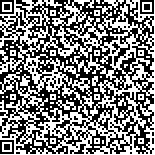| 本文已被:浏览 262次 下载 367次 |

码上扫一扫! |
|
|
| 甘草酸/甘草次酸抗肝癌作用研究进展 |
|
刘仲雁1,2,3, 郭雪丽1,2,3, 吴立娜1,2,3, 李鑫1,2,3, 贾欣陶1,2,3, 郭盼1,2,3
|
|
1.天津中医药大学 组分中药国家重点实验室, 天津 301617;2.天津中医药大学 现代中药发现与制剂技术教育部工程研究中心, 天津 301617;3.天津中医药大学 现代中医药海河实验室, 天津 301617
|
|
| 摘要: |
| 肝癌属难治性恶性肿瘤,是全球第二大癌症死因。化疗是抗癌治疗的一种有效方法。然而目前大多数的抗癌药物是相对分子质量较低的疏水性分子,普遍缺乏对肿瘤细胞的特异性,伴随生物利用率低、毒副作用严重和体内细胞膜以及其他天然生理屏障作用等问题,极大限制了治疗药物在临床上的应用。甘草酸是从中药甘草的干燥根及根茎中提取出的活性成分,也是具备双亲性结构的天然表面活性剂,甘草次酸是它主要水解物。研究表明,甘草酸/甘草次酸能够特异性靶向肝脏,并具有多重抗肿瘤活性。目前甘草酸/甘草次酸已应用于“壳-核”型载药胶束、脂质体、纳米颗粒等多种抗肿瘤纳米载药体系。以甘草酸/甘草次酸修饰的药物递送系统能够实现肝靶向治疗,提高抗肝癌药物的生物利用度,降低药物对人体毒副作用的同时还能发挥自身的协同抗肿瘤效果,最终实现增强抗癌药物体系抗肝癌疗效的目的。文章综述了甘草酸/甘草次酸在抗肝癌载药系统的应用,并详细分析了它们自身的抗肝癌药理作用,以期为肝靶向抗癌药物体系的研发提供参考。 |
| 关键词: 甘草酸 甘草次酸 靶向载体 肝癌 抗肿瘤机制。 |
| DOI:10.11656/j.issn.1673-9043.2024.06.14 |
| 分类号:R735.7 |
| 基金项目:国家自然科学基金项目(82004217);天津市教委科研计划项目(2019KJ080)。 |
|
| Progress in the study of the anti-hepatocellular carcinoma effect of glycyrrhizin acid/glycyrrhetinic acid |
|
LIU Zhongyan1,2,3, GUO Xueli1,2,3, WU Lina1,2,3, LI Xin1,2,3, JIA Xintao1,2,3, GUO Pan1,2,3
|
|
1.State Key Laboratory of Component-Based Chinese Medicine, Tianjin University of Traditional Chinese Medicine, Tianjin 301617, China;2.Engineering Research Center of Modern Chinese Medicine Discovery and Preparation Technique, Ministry of Education, Tianjin University of Traditional Chinese Medicine, Tianjin 301617, China;3.Haihe Laboratory of Modern Chinese Medicine, Tianjin University of Traditional Chinese Medicine, Tianjin 301617, China
|
| Abstract: |
| Liver cancer is the second most difficult lethal disease in treatment in the world which belongs to refractory malignant tumors. Chemotherapy is responsible for anti-cancer treatment. Until now,most drugs of anticancer are hydrophobic molecules with lower relative molecular mass and commonly lack drug specificity for tumor cells. Meanwhile,some issues about the drugs like low bioavailability,serious toxic side effects,and the difficulty of passing through cell membranes and other natural physiological barriers greatly limit the therapeutic effect of drugs in clinical practice. Glycyrrhizin is an active ingredient extracted from the dried roots and rhizomes of traditional Chinese medicine (TCM) licorice. It is also a natural surfactant with an amphiphilic structure,and glycyrrhetinic acid is its main hydrolysate. It’s demonstrated that glycyrrhizin/glycyrrhetinic acid can specifically target the liver and have multiple anti-tumor activities. Heretofore glycyrrhizin/glycyrrhetinic acid has been applied in various antitumor nanocarrier systems such as “shell-core” drug delivery micelles,liposomes,and nanoparticles. The drug delivery decorated by glycyrrhizin/glycyrrhetinic acid makes targeting liver therapy reliable,it can improve the bioavailability of anti-liver cancer drugs and reduce their toxic side effects on the human body,while also exerting their synergistic anti-tumor effects,ultimately achieving the goal of enhancing the anti-liver cancer efficacy of the anti-cancer drug system. In this article,glycyrrhizin/glycyrrhetinic acid is discussed to research progress on the application of anti-liver cancer drug delivery systems and anti-liver cancer pharmacological effects,this overview provides reference regarding a better understanding of the development of liver-targeted anti-cancer drug system. |
| Key words: glycyrrhizic acid glycyrrhizinic acid targeted vector hepatocellular carcinoma anti-tumour mechanism |
